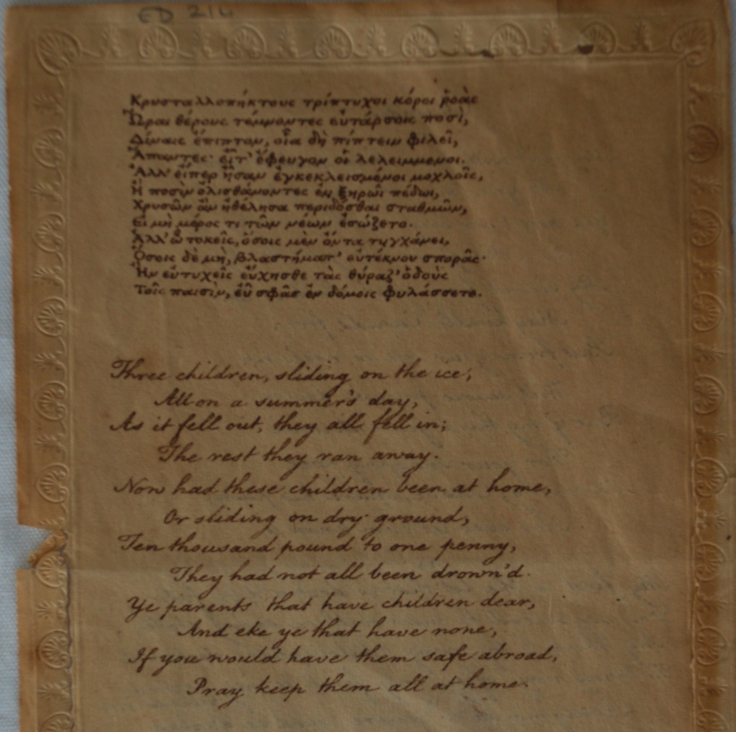Richard Porson (1759-1808) was an eminent classicist whose valuable contributions to classical scholarship were often characterised by his precise emendations and thorough understanding of Greek metre (the rhythmic structure of a verse). A critical edition of Euripides’ four plays (Hecuba, Orestes, Phoenissae and Medea) was one of Porson’s most famous publications.

The budding classicist first set foot in Eton as a King’s Scholar in 1774. Only boys from the home counties (those surrounding London) tended to be King’s Scholars at that time, in part due to travel expenses. Porson, however, was from Norfolk. Fuelled by encouragement from Reverend Thomas Hewitt, his private tutor at the time, and John Norris, a professor at Cambridge, as well as by an £80 yearly settlement from the latter, Porson made his way to Eton. Clearly, his intellectual abilities had made quite the impression.
Porson had a natural affinity for accuracy and precision, a trait which was apparent throughout his time at Eton and which must have contributed towards his aptitude for classical studies. His faultless memory is an excellent example of this characteristic. Porson was once requested by his master to translate a passage of Horace and, following a mix up of books, he ended up with the wrong one in his hands. He was not deterred, however, and translated the passage from memory without fault. The Ovid book which he was actually holding went unnoticed…
Porson’s precision was also displayed through his penmanship. His handwriting was immaculately neat, with all the letters consistently shaped, sized and aligned. We are very fortunate here at Eton to hold a copy of Porson’s hand in our archive. The neat Greek script details a charade – or riddle – with an English translation below.

Indeed, Porson’s handwriting was so well presented that a typeface was developed using his script as a model. Aptly, this was given the name ‘Porson’ and was used solely for Greek text. The Porson typeface was distinguished by its clarity and simplicity: combinations of letters (ligatures) and contractions of words were omitted, characters were well-aligned and less curved than in other typefaces. Cut and cast in 1806, the typeface was implemented in 1808, shortly after Porson’s death, and it soon gained popularity, eventually being released by Monotype in 1913. The typeface is still used to this day, most famously in the ‘Oxford Classical Texts’ series, books which I myself have used throughout my time studying classics.

From his fine handwriting to the detailed emendations in his critical scholarship and his sharp memory, Porson was clearly not only a great scholar but a man of great precision.
By Grace Bottomley, Archives Assistant
Bibliography
Card, Tim. Eton Established: A History from 1440 to 1860. London: John Murray Publishers, 2001.
Clarke, M.L. Richard Porson: A Biographical Essay. Cambridge: Cambridge University Press, 1937.



